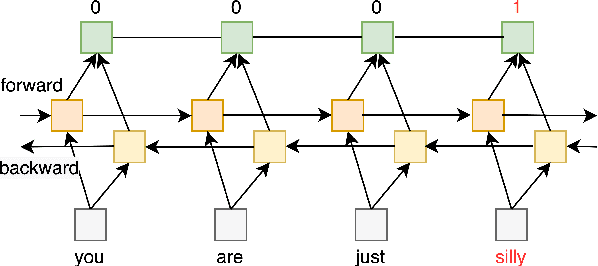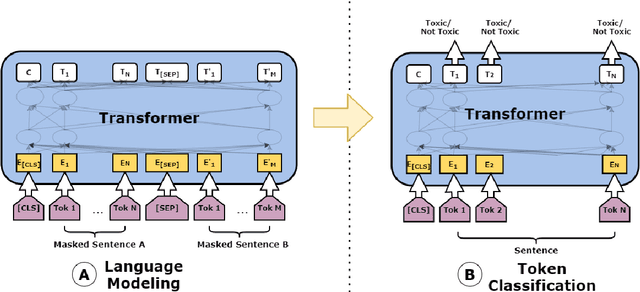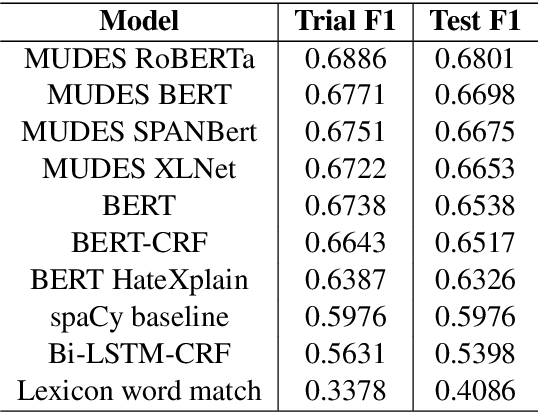Diptanu Sarkar
FBERT: A Neural Transformer for Identifying Offensive Content
Sep 10, 2021



Abstract:Transformer-based models such as BERT, XLNET, and XLM-R have achieved state-of-the-art performance across various NLP tasks including the identification of offensive language and hate speech, an important problem in social media. In this paper, we present fBERT, a BERT model retrained on SOLID, the largest English offensive language identification corpus available with over $1.4$ million offensive instances. We evaluate fBERT's performance on identifying offensive content on multiple English datasets and we test several thresholds for selecting instances from SOLID. The fBERT model will be made freely available to the community.
WLV-RIT at SemEval-2021 Task 5: A Neural Transformer Framework for Detecting Toxic Spans
Apr 15, 2021



Abstract:In recent years, the widespread use of social media has led to an increase in the generation of toxic and offensive content on online platforms. In response, social media platforms have worked on developing automatic detection methods and employing human moderators to cope with this deluge of offensive content. While various state-of-the-art statistical models have been applied to detect toxic posts, there are only a few studies that focus on detecting the words or expressions that make a post offensive. This motivates the organization of the SemEval-2021 Task 5: Toxic Spans Detection competition, which has provided participants with a dataset containing toxic spans annotation in English posts. In this paper, we present the WLV-RIT entry for the SemEval-2021 Task 5. Our best performing neural transformer model achieves an $0.68$ F1-Score. Furthermore, we develop an open-source framework for multilingual detection of offensive spans, i.e., MUDES, based on neural transformers that detect toxic spans in texts.
 Add to Chrome
Add to Chrome Add to Firefox
Add to Firefox Add to Edge
Add to Edge